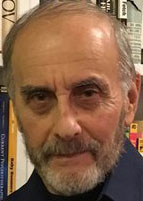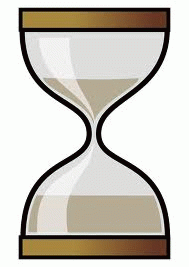American corporations have pretty much written off the middle class. Their actions declare that the middle class is moribund. And they should know since they have been in the front lines shooting down and decimating the middle class. Indeed, American business has dismantled much of manufacturing and has eliminated untold numbers of other middle class jobs, sending them overseas where cheap labor fattens corporate pr of its at the expense of American workers. That's why the employment and housing markets are struggling on life support, food stamp use is at an all time high and the ranks of the working poor are swelling--- while corporate profits soar and the S&P 500 stocks show the best first quarter since 1998.
In view of the assault on American jobs and workers is it any wonder that a Stanford University study reveals a dramatic drop in American families living in middle class neighborhoods---from sixty-five percent in 1970 to forty-four percent in 2009. Robert Borosage, President of the Institute for America's Future, adds this alarming note : "The broad middle class -- the triumph and strength of America's democracy -- is sinking. Unless we change course dramatically, we will become even more a nation of haves and have-nots."
Brookings economist Ron Haskins dismisses the notion of a suffering middle class. In his Washington Post commentary on March, 29th, " The Myth of The Disappearing Middle Class," he argues that "when the insurance value of health care and the value of certain government transfer payments are included in income....the disappearing middle class appears pretty healthy." Doesn't this sound like Mitt Romney's comment--"I'm not concerned with the very poor because we have safety nets there"--applied to the middle class? So I guess we don't have to worry about anyone. Let's break out the champagne!
But Jared Bernstein, Senior Fellow, Center on Budget and Policy Priorities, disputes Haskins rosy picture and insists that the middle class has been "squeezed" by the economic downturn."Squeezed," though, doesn't adequately capture the dire state of the middle class, confirmed by the actions of U.S. industries that are revising their business plans.
What is corporate America's response? Rather than mounting crash programs for generating solid middle class jobs they have figured out how to pr of it from the sinking ship.
Corporate America is shifting its focus in product development and marketing to serve the "hourglass economy." The hourglass has two chambers connected by a slim channel. Translated into economic terms, or better yet, the emerging picture of America, the two chambers represent rich and poor, with virtually nothing in the middle.
Worse, while the traditional hourglass has two equal chambers, the economic hourglass does not. One chamber contains a small percent of the population and most of the wealth and the other is filled with the bulk of Americans, who have little access to resources and diminished hope for prosperity The hourglass economy has become so entrenched that Bloomberg News credits it with dividing Americans and defining U.S. politics.
Leading the rush into the hourglass economy are some icons of American industry, like Proctor and Gamble . Here's what Melanie Healey, group president of P&G's North America business, said to the Wall Street Journal about what her company did when it started losing market share to competitors who were catering to the low end market: "It's required us to think differently about our product portfolio and how to please the high-end and lower-end markets ...That's frankly where a lot of the growth is happening."
P& G is not alone in catering to the top and bottom of the hourglass and ignoring the middle, according to WSJ columnist Ellen Byron. H.J. Heinz Co is expanding its offerings of lower priced products to celebrate the hourglass model. And shooting for the high end, Saks, Inc. is growing its line of pricier products to serve the deep pocketed consumer segment that accounts for most of its growth.
Many other retailers are generating impressive year-to-year gains by marketing to the top and bottom consumers including, Coach, Lululemon Athletica, Whole Foods, Family Dollar and Costco.
The hourglass economy is even impacting the "green" industry. Eco-friendly products are typically costly and, there for e, appeal to wealthier consumers. Green marketers are struggling to find strategies for making their products appeal to a cash strapped low end market.
Citigroup was quick to notice the hourglass trend that was taking root in 2009. To help investors cash in on the demise of the middle class Citigroup recently issued an hourglass investment advisory that highlights twenty stocks of companies targeting low end consumers and fifteen companies targeting the high end ones. Showing that the hourglass economy is real and gaining momentum, Citigroup's hourglass index posted a whopping 56.5% return between Dec. 10, 2009 and Sept. 1, 2011, according to financial reporter Patrick Martin.
Since business models are projected well into the future, corporate America's hourglass strategy forecasts a long grim road ahead for the middle class--and the economy.
Yet politicians continue to express their heartfelt concern for the middle class, pledging to shore up this segment of the population. Are they just placating us while secretly supporting the hourglass strategy of their corporate sponsors? Is it possible that you and I know that corporate America has abandoned the middle class but that politicians are ignorant of this stark reality?






